Abstract
A multivariate approach was used to evaluate the significance of synthetic oil-induced perturbations in the functional activity of sediment microbial communities. Total viable cell densities, ATP-biomass, alkaline phosphatase and dehydrogenase activity, and mineralization rates of glucose, protein, oleic acid, starch, naphthalene, and phenanthrene were monitored on a periodic basis in microcosms and experimental ponds for 11 months, both before and after exposure to synthetic oil. All variables contributed to significant discrimination between sediment microbial responses in control communities and communities exposed to a gradient of synthetic oil contamination. At high synthetic oil concentrations (4,000 ml/12 m3), a transient reduction in sediment ATP concentrations and increased rates of oleic acid mineralization were demonstrated within 1 week of exposure. These transient effects were followed within 1 month by a significant increase in rates of naphthalene and phenanthrene mineralization. After initial construction, both control and synthetic oil-exposed microbial communities demonstrated wide variability in community activity. All experimental microbial communities approached equilibrium and demonstrated good replication. However, synthetic oil perturbation was demonstrated by wide transient variability in community activity. This variability was primarily the result of the stimulation of polyaromatic hydrocarbon mineralization rates. In general, microcosms and pond communities demonstrated sufficient resiliency to recover from the effects of synthetic oil exposure within 3 months, although polyaromatic hydrocarbon mineralization rates remained significantly elevated.
Full text
PDF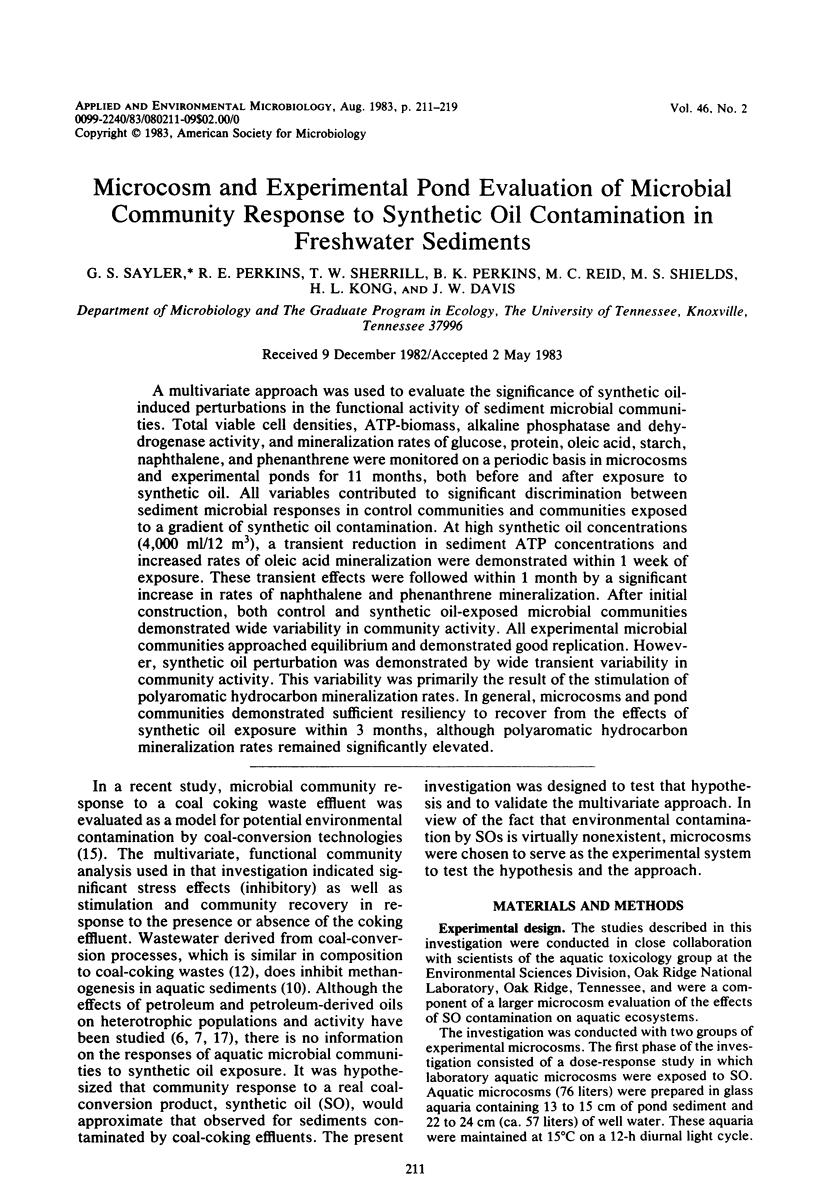
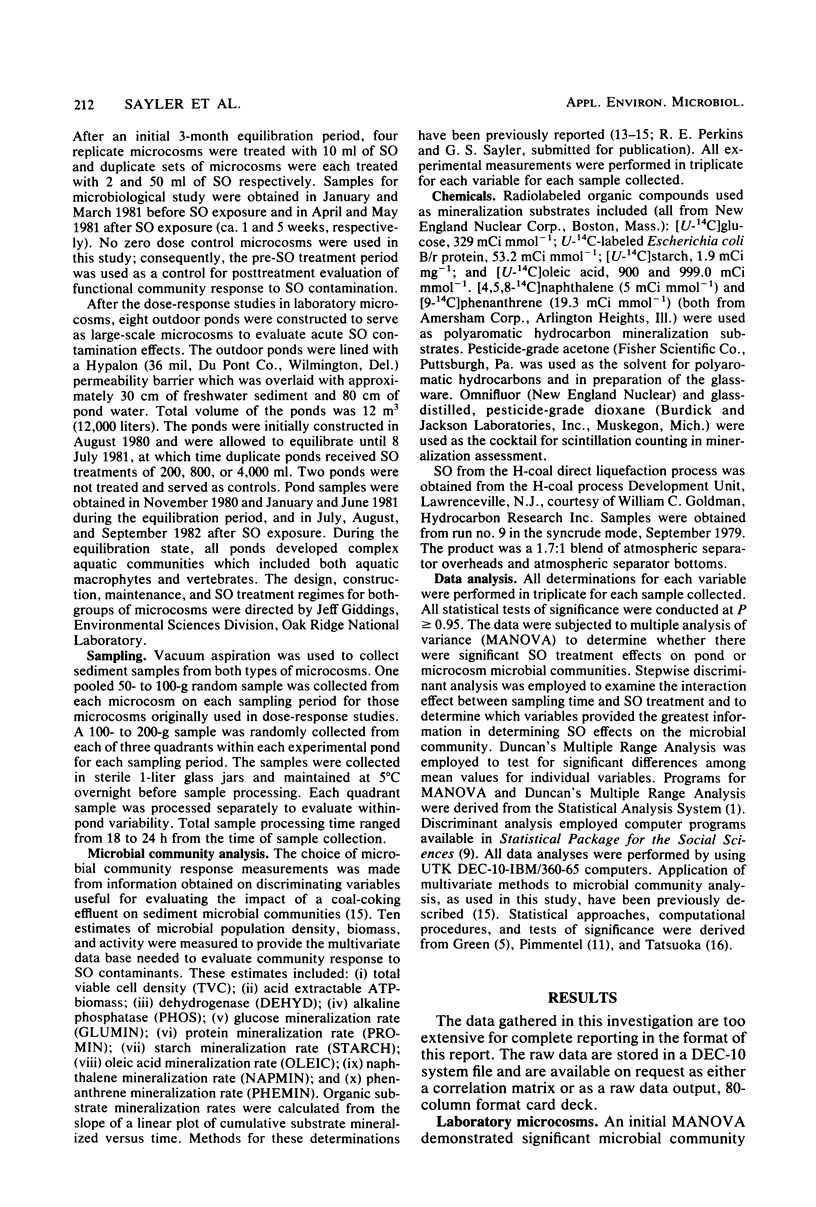
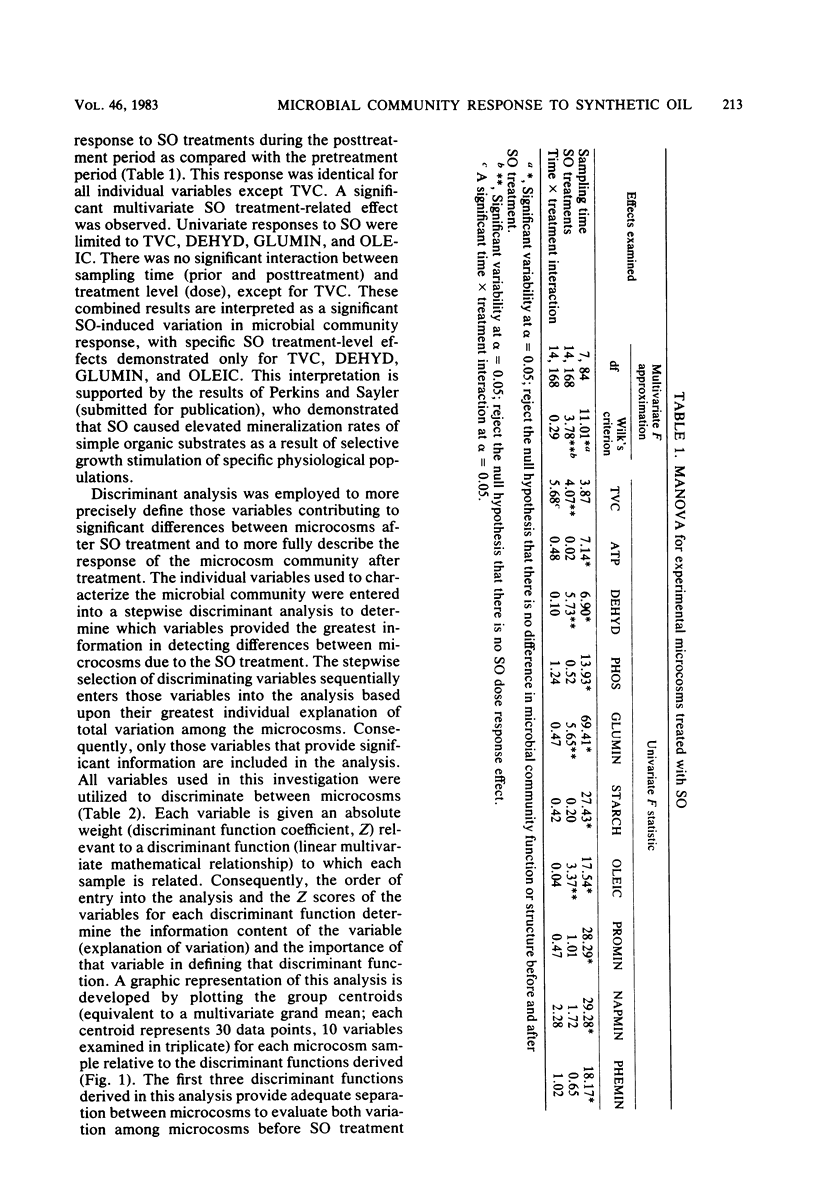
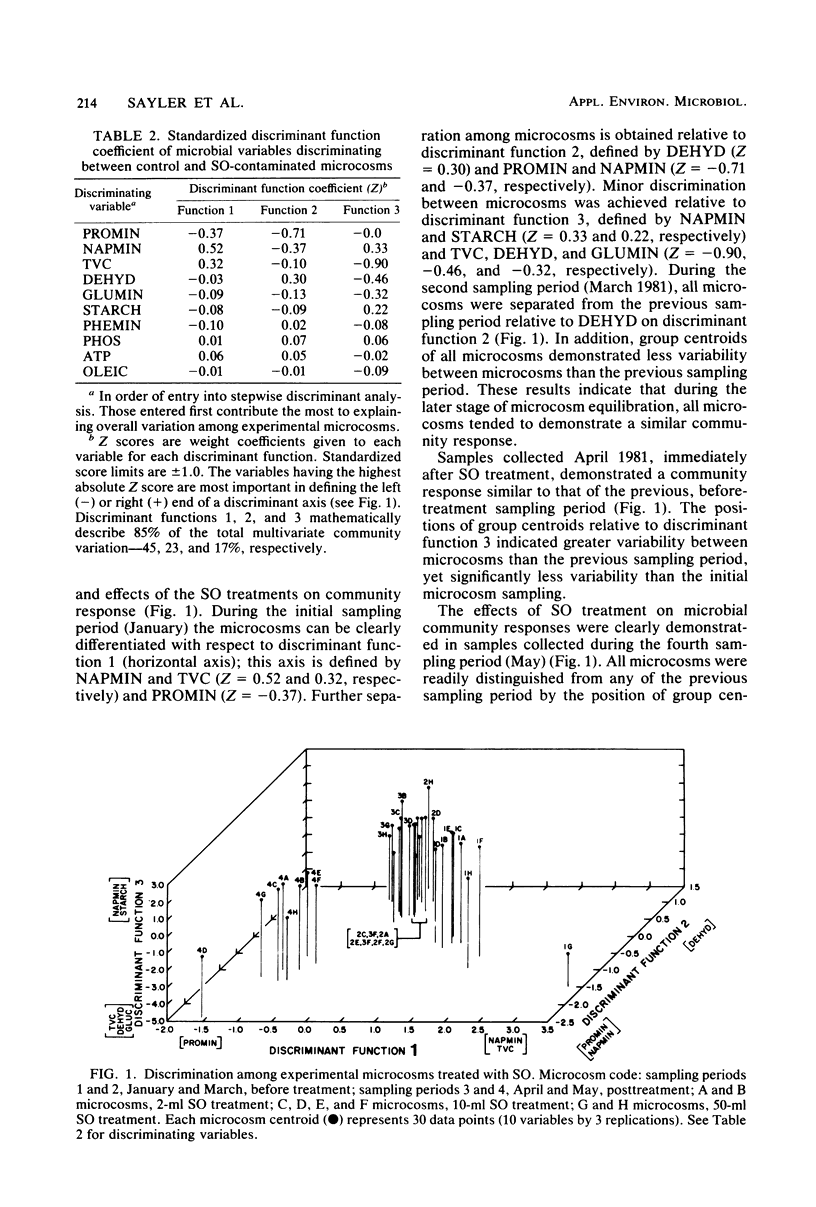
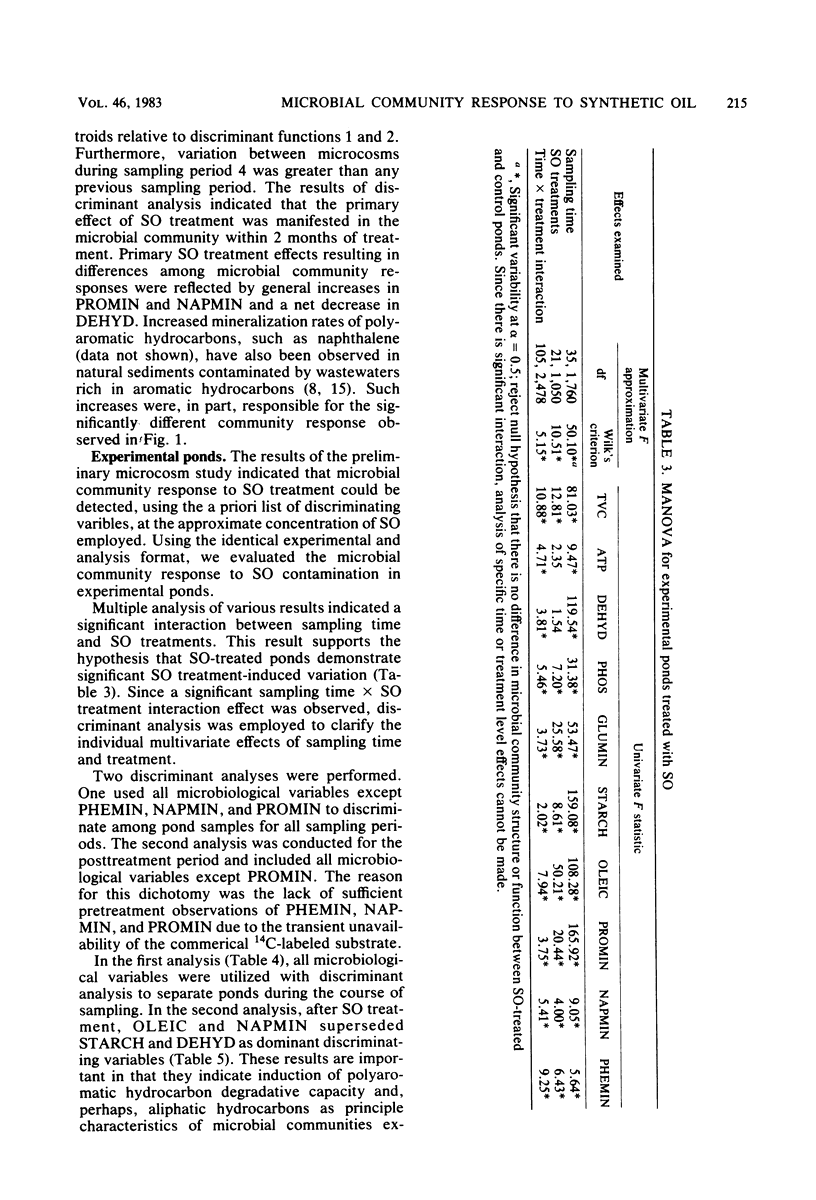
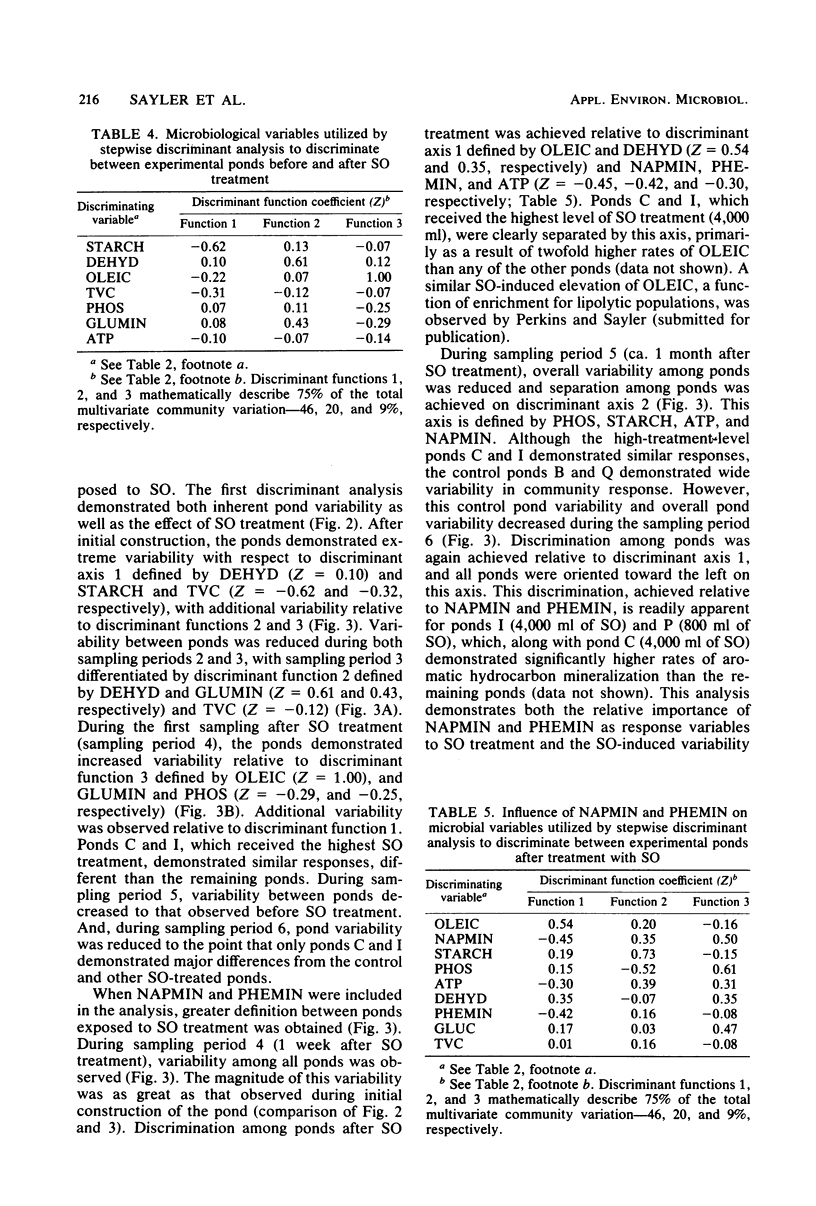
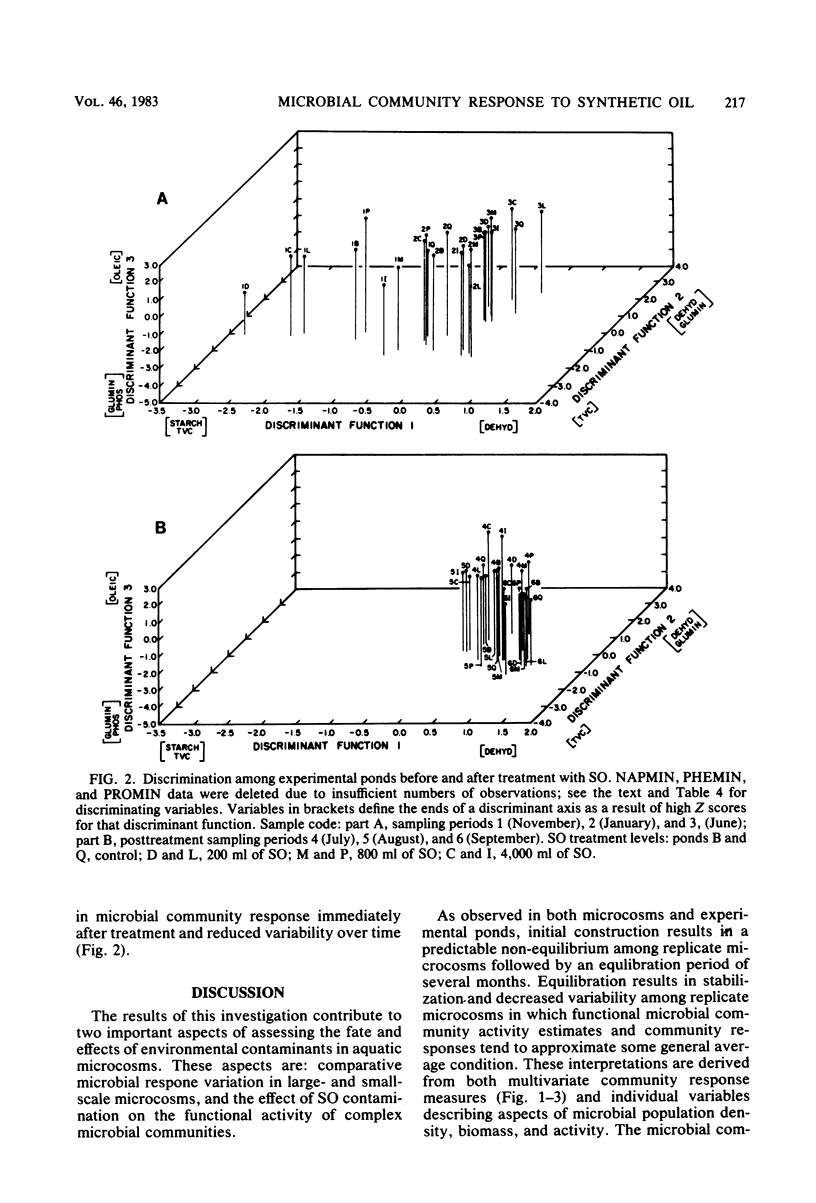
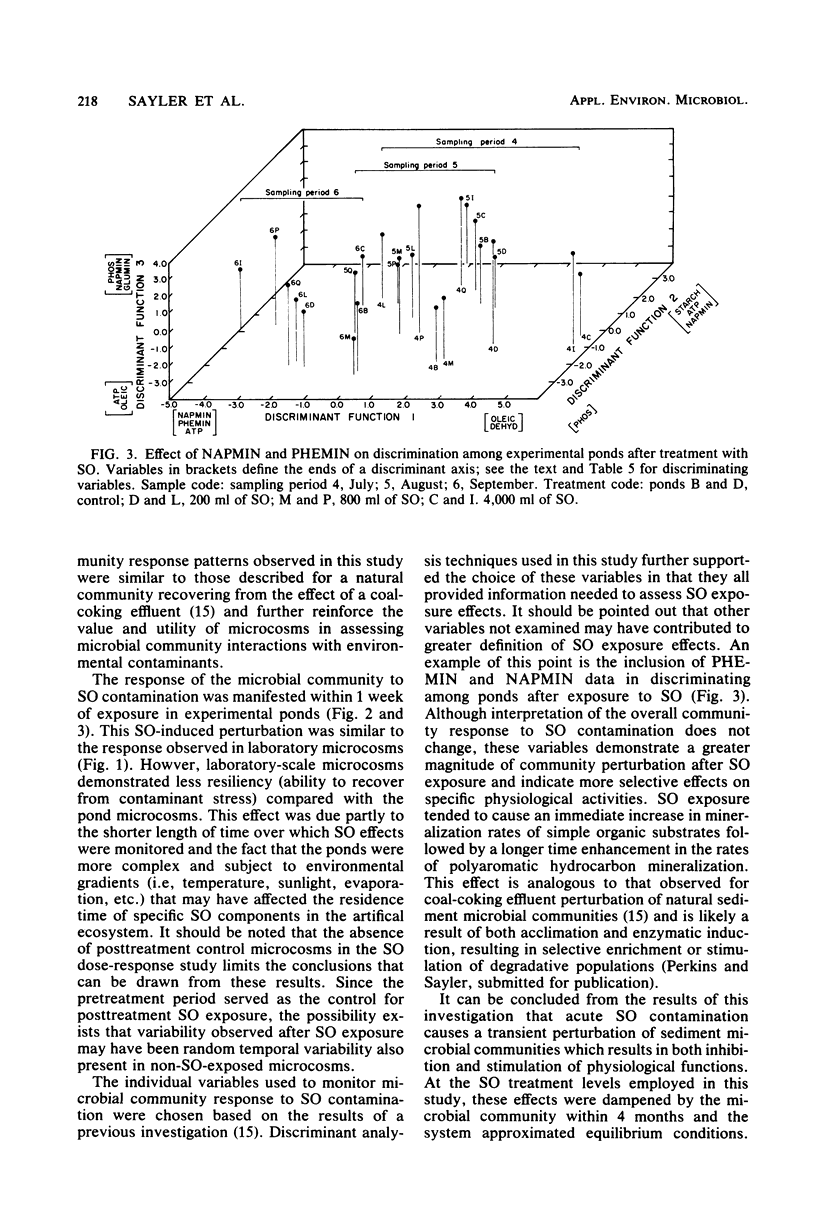
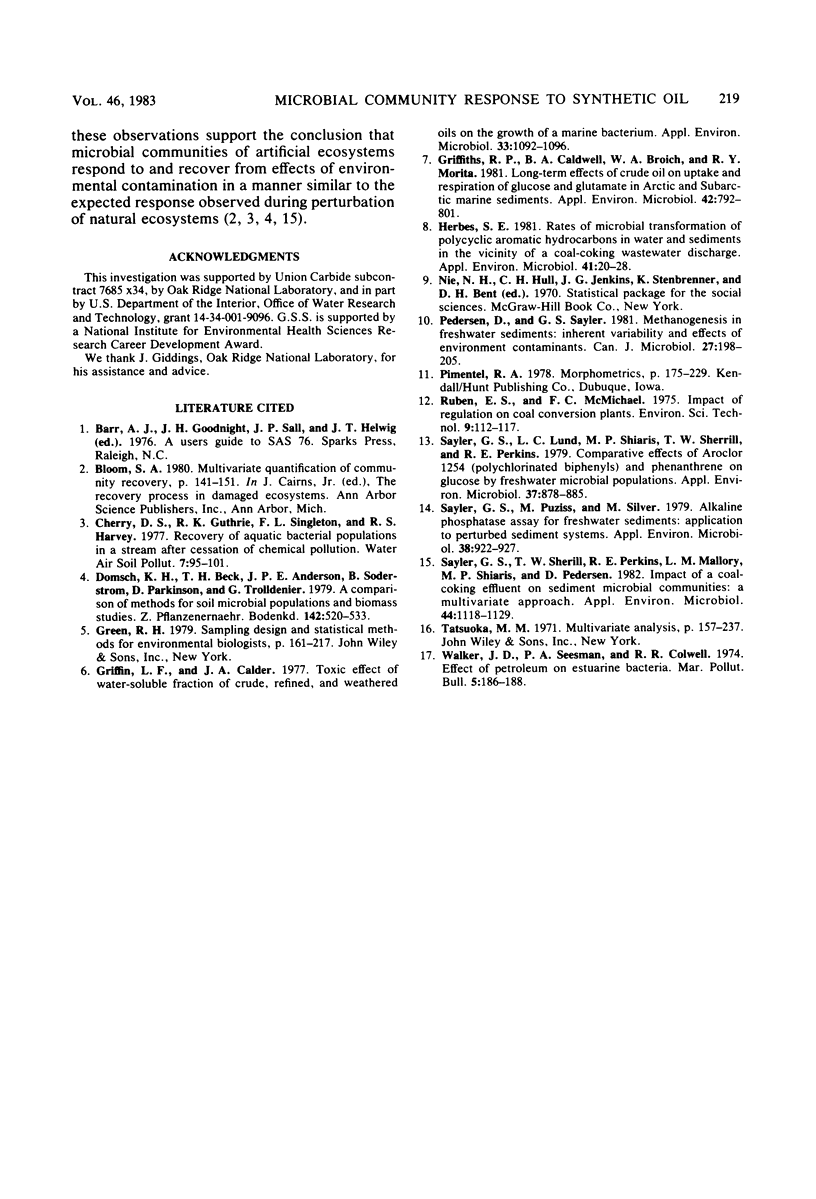
Selected References
These references are in PubMed. This may not be the complete list of references from this article.
- Griffin L. F., Calder J. A. Toxic effect of water-soluble fractions of crude, refined, and weathered oils on the growth of a marine bacterium. Appl Environ Microbiol. 1977 May;33(5):1092–1096. doi: 10.1128/aem.33.5.1092-1096.1977. [DOI] [PMC free article] [PubMed] [Google Scholar]
- Griffiths R. P., Caldwell B. A., Broich W. A., Morita R. Y. Long-term effects of crude oil on uptake and respiration of glucose and glutamate in arctic and subarctic marine sediments. Appl Environ Microbiol. 1981 Nov;42(5):792–801. doi: 10.1128/aem.42.5.792-801.1981. [DOI] [PMC free article] [PubMed] [Google Scholar]
- Herbes S. E. Rates of microbial transformation of polycyclic aromatic hydrocarbons in water and sediments in the vicinity of a coal-coking wastewater discharge. Appl Environ Microbiol. 1981 Jan;41(1):20–28. doi: 10.1128/aem.41.1.20-28.1981. [DOI] [PMC free article] [PubMed] [Google Scholar]
- Pedersen D., Sayler G. S. Methanogenesis in freshwater sediments: inherent variability and effects of environmental contaminants. Can J Microbiol. 1981 Feb;27(2):198–205. doi: 10.1139/m81-031. [DOI] [PubMed] [Google Scholar]
- Sayler G. S., Lund L. C., Shiaris M. P., Sherrill T. W., Perkins R. E. Comparative effects of Aroclor 1254 (polychlorinated biphenyls) and phenanthrene on glucose uptake by freshwater microbial populations. Appl Environ Microbiol. 1979 May;37(5):878–885. doi: 10.1128/aem.37.5.878-885.1979. [DOI] [PMC free article] [PubMed] [Google Scholar]
- Sayler G. S., Puziss M., Silver M. Alkaline phosphatase assay for freshwater sediments: application to perturbed sediment systems. Appl Environ Microbiol. 1979 Nov;38(5):922–927. doi: 10.1128/aem.38.5.922-927.1979. [DOI] [PMC free article] [PubMed] [Google Scholar]
- Sayler G. S., Sherrill T. W., Perkins R. E., Mallory L. M., Shiaris M. P., Pedersen D. Impact of coal-coking effluent on sediment microbial communities: a multivariate approach. Appl Environ Microbiol. 1982 Nov;44(5):1118–1129. doi: 10.1128/aem.44.5.1118-1129.1982. [DOI] [PMC free article] [PubMed] [Google Scholar]


